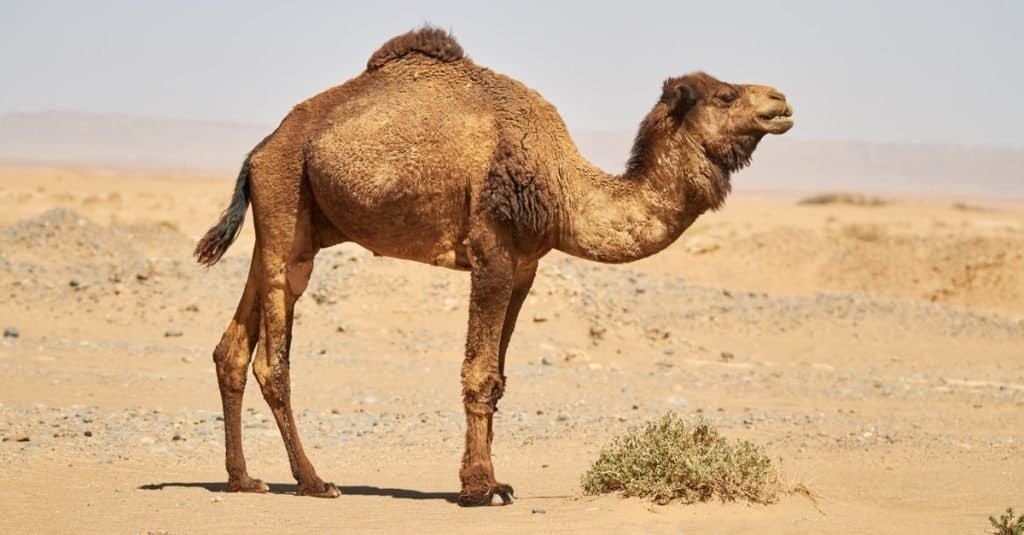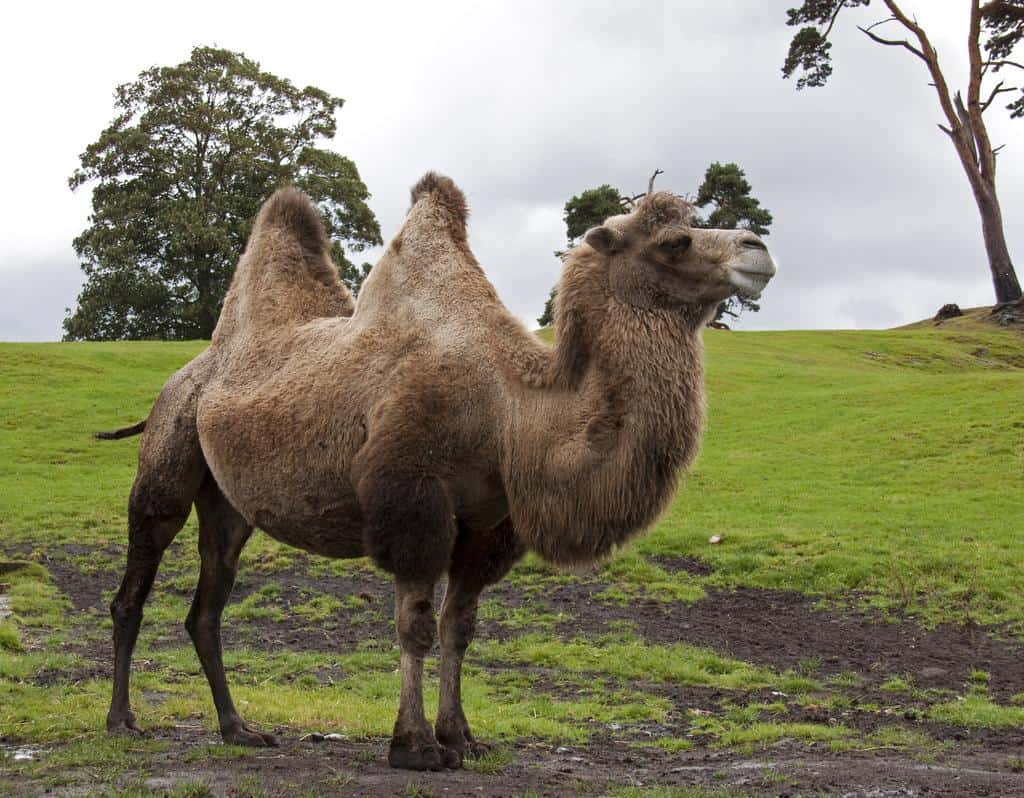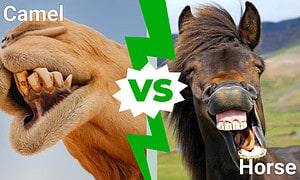Nowadays, camels are used as a means of transportation or carrying heavy things because they were domesticated approximately 5,000 years ago. Moreover, they’re popular thanks to their unique appearance, attracting many tourists worldwide. However, there’s much more to camels than just transportation and appearance! They are incredible animals with incredible conservation instincts!
You won’t even believe how a camel’s body has adapted to the habitats it lives in! Did you know that camels have three stomachs and that their poop is an excellent fertilizer? But what if we told you that people used to eat camel poop to treat dysentery? Check out this article to learn many interesting facts about camels, their digestion, and poop!
What are camels?

Camels are ungulates that have humps as a distinctive feature.
©Photoestetica/Shutterstock.com
Camels are ungulates that have humps as a distinctive feature. These animals primarily live in the deserts of Northern Africa and the Middle East. Because they live in hot, dry habitats, their bodies have adapted to make it easier for them to survive in such environments.
First, their color and fur protect them from the sun. Their long legs protect them from the ground heat, while their feet and toes help them walk on sand and rocks. A camel’s long eyelashes protect their eyes from dust storms. Moreover, because they rarely have access to fresh water sources, their bodies have learned how to absorb the water from the plants they eat so that they don’t dry out.
What do camels eat, and what eats them?

Camels eat grass, wheat, grains, and oats.
©Kertu/Shutterstock.com
Camels are herbivorous animals; they eat grass, wheat, grains, and oats. Camels often feed on plants that are high in salt. They can sometimes eat bones or carrion.
They have the amazing ability to store food as fat in their hump. They use it when they don’t have anything to eat or drink.
Camels used to fall prey to lions and leopards. However, since there aren’t any camels in the wild, as they are now domesticated animals, they don’t have predators. Still, even in the past, they were rarely killed by lions and leopards – primarily because of their large size and secondly because there weren’t too many predators in the arid regions where camels lived.
What does camel poop look like?

Camel droppings consist of piles of round, dark brown, or black pellets.
©iStock.com/Oksana Drobotun
Camel droppings consist of piles of round, dark brown, or black pellets. Sometimes they can have gray shades. From a distance, they look like those small, round chocolate balls.
Compared to other animals’ droppings, camel poop is much drier. This is caused by their bodies adapting to extracting and absorbing all the water from what they eat. Since camels rarely have access to fresh water sources, they need to get as much water as possible from the plants they feed on.
What is camel poop good for?
First, camel poop is used as natural fertilizer, as it’s rich in carbon, ammonia, and nitrogen, among other beneficial nutrients. However, if we were to compare its manure with other animals’ manure, camel dung contains the lowest levels of carbon. On the other hand, its nitrogen levels are higher than those in goat manure.
Then, camel dung can be useful in the fuel industry. Why? Thanks to the high cellulose levels that make it flammable. Our planet’s environment could greatly benefit from using camel poop as fuel because reducing coal usage will also affect climate change – in a good way, of course! Using camel droppings for heating isn’t a new “science,” as people have been using them to heat their homes for centuries.
Can eating camel feces treat dysentery?

Eating camel feces does not treat dysentery.
No, eating camel feces does not treat dysentery. Let’s see why.
Many people heard the story about World War II when the German soldiers in North Africa ate camel dung to treat dysentery. People believed the story because camel poop contains Bacillus subtilis, now a commercial probiotic that sustains the good functioning of the digestive system. So scientists decided to check whether this was possible. Could eating camel feces treat dysentery?
The answer is no. Or, at least, that’s what this research paper says after analyzing the contents of Egyptian camel feces. At first, the researchers didn’t even find Bacillus subtilis in camel feces, but after “using a more sensitive culture-based assay,” they could find only low amounts of Bacillus subtilis, which couldn’t be enough to treat dysentery. Moreover, they’ve tried to find any available official source mentioning that eating camel dung treats dysentery and found only one review paper referring to this, but it’s still inconclusive.
How do camels digest their food?
A study shows that camels’ split upper lip helps them selectively eat plants and easily feed on thorn bushes. When ingested, camel’s food goes through the esophagus to reach the forestomach. The forestomach is made up of the rumen, reticulum, and abomasum. Here’s where the food is fermented and digested. Then it goes into the first part of the small intestine called the duodenum, which connects to the large intestine. After this, the excrements exit the body through the rectum.
Incredible camel facts
- Camels can live up to 50 years and breed between three and five years!
- Camel milk contains lots of iron and Vitamin C, which are extremely beneficial for the human immune system, help prevent diabetes and improve blood circulation.
- Camels can drink approximately 20 gallons (and even more) of water at once! Many sources state that it can drink 53 gallons of water in three minutes!
- Camels have three stomachs that help ferment and digest the food.
- Some baby camels are born completely white!
- Camels chew the food, “vomit,” and then chew it again to absorb the nutrients more easily and efficiently.
- Camels live in herds and communicate with each other through various sounds.
- The IUCN Red List categorized the Bactrian camel as Critically Endangered, as only about 1000 Bactrian Camels are left.
Up Next:
The photo featured at the top of this post is © Chris Ison/Shutterstock.com
Thank you for reading! Have some feedback for us? Contact the AZ Animals editorial team.







